Welcome to Addy Travel. Hotline: +84 983 585 189 - Email: info@addytravel.com
Ho Chi Minh City Travel Guide
Vibrant and Diverse Culture Ho Chi Minh City (HCMC) is a melting pot of cultures, offering a wide variety of tourism products. Known as the "city that never sleeps," it boasts exciting entertainment and activities day and night.
TRAVEL GUIDE
12/27/202411 min read
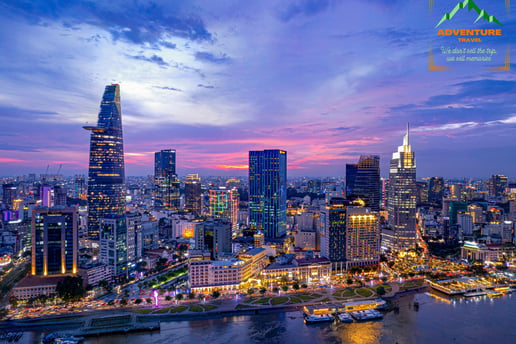

Best Time to Visit
Ho Chi Minh City lies in a tropical monsoon climate near the equator. The weather is consistently warm throughout the year, with distinct rainy and dry seasons. The rainy season lasts from May to November, while the dry season spans from December to April. The average temperature is around 27°C, with highs exceeding 40°C, but the heat is generally not harsh. Humidity is low, and the evenings are cool.
The heat is not as severe as in northern Vietnam, making the city a year-round destination. If visiting during the rainy season, it is advisable to carry an umbrella for sudden downpours.
Getting to Ho Chi Minh City
As a major metropolis, getting to Ho Chi Minh City is convenient with a full range of transportation options including flights, trains, cruises, and buses. All domestic airlines offer direct flights to Tan Son Nhat Airport from various cities daily. Ho Chi Minh City has the highest frequency of arrivals and departures in Vietnam. Round-trip airfare ranges from 2 to 4 million VND, depending on the departure point and booking time. Tan Son Nhat Airport is located in Tan Binh District, about 8 km from downtown District 1 and approximately 5 km from District 3 and Phu Nhuan District. Traditional taxis from the airport to the city center cost around 250,000 VND, while ride-hailing apps offer lower fares—about half the price during non-peak hours. A useful tip is to walk to the international terminal for faster pick-up compared to the domestic terminal. For trains, the fastest Reunification Express route between Hanoi and Ho Chi Minh City takes 30 hours, stopping at major stations such as Vinh, Dong Hoi, Hue, and Da Nang. Tickets can be purchased from reputable agencies or directly on the official website (dsvn.vn), allowing travelers to select departure and arrival stations and seat or sleeper options. Prices vary by class and seat type. The main north-south roadways include National Route 1A and the Ho Chi Minh Trail, offering flexible travel options depending on the destination.
Getting Around Ho Chi Minh City
Transportation within the city is convenient, with various options available. Renting a motorbike is one of the most popular choices. Most accommodations offer motorbike rentals, or they can be found online, mainly in central areas. Daily rental rates range from 100,000 to 200,000 VND, depending on the bike. Deposits may vary from 1 to 4 million VND, or in some cases, only an ID is required.
Ride-hailing services (cars or motorbikes) are also a convenient way to get around the city, though frequent rides can be costly.
Public transportation, such as buses and public bicycles, is a budget-friendly option. Public bicycles, launched in December 2021, are available at stations across District 1, near bus stops, parks, and tourist attractions. Rental costs 5,000 VND for 30 minutes or 10,000 VND for 60 minutes.
Accommodation
Ho Chi Minh City offers diverse accommodation options, including hotels, homestays, and serviced apartments. Prices range from a few hundred thousand VND to tens of millions per night.
Luxury hotels (3-7 million VND per night) include Park Hyatt Saigon, Hotel Majestic Saigon, Hotel des Arts Saigon, Pullman Saigon Centre, Hotel Nikko Saigon, Norfolk Mansion, and La Vela Saigon.
For mid-range accommodations (1-2 million VND), consider Wink Hotel Saigon Centre, La Memoria Hotel, The Hammock Hotel Ben Thanh, Millennium Boutique Hotel, and The Odys Boutique Hotel.
Serviced apartments, stylishly decorated and equipped like regular apartments, cost between 800,000 and 2 million VND. Options include Ariosa, The Bloom, City Oasis, S Home, and M Village Boutique.
Homestays under 1 million VND per night include Nấp Saigon, Home, Hostie Saigon Wanderlust Home, Cactusland Homestay, and Zooz Studio. Budget guesthouses are also available and can be booked via Agoda or Booking.
Tourism and Entertainment Activities
Each district in Ho Chi Minh City aims to develop its unique tourism products. The city offers diverse entertainment, attractions, and shopping experiences suitable for all visitors.
River Bus
River experiences are a highlight of Ho Chi Minh City tourism, providing unique views of landmarks such as Nha Rong Wharf, Ben Nghe Port, Phu My Bridge, Mui Den Do (Red Light Cape), and Binh Khanh Ferry Terminal.
The river bus departs daily from Bach Dang Wharf, Binh An, Linh Dong, Thanh Da, and Hiep Binh Chanh, with the latest trip at 10 PM. Tickets are available online or at the pier for 15,000 VND per ride.
Dinner Cruises
Evening cruises depart from Saigon Port, taking visitors along the river to view nighttime cityscapes such as Nha Rong Wharf, Ben Nghe Port, Saigon Bridge, and Landmark 81. Dining on the cruise offers a blend of Asian and Western cuisine, with ticket prices ranging from 350,000 VND to over 1 million VND. Entertainment programs include live music, dance, and magic shows.
Private cruises for up to 20 people can be booked for 10 to 25 million VND
Sightseeing from a Double-Decker Bus
The city center offers open-top double-decker buses equipped with an automatic multi-language audio guide system, tourist maps, free Wi-Fi, and tour guides. Each trip lasts about 60 minutes, passing famous landmarks such as the Saigon Zoo and Botanical Gardens, War Remnants Museum, Bui Vien Walking Street, Ben Thanh Market, Nguyen Hue Walking Street, and the Opera House. The journey concludes with a panoramic city view from the 49th floor Saigon Skydeck at Bitexco Financial Tower.
The buses operate daily from 9 AM to 10:30 PM, with departures every 30 minutes. In the evening, there’s an additional package that includes dinner on a luxury cruise along the Saigon River. Tickets can be purchased directly at the departure point at 92-96 Nguyen Hue Street, District 1, or online.
Strolling in the Park
The Saigon Zoo and Botanical Gardens, over 150 years old, is the eighth oldest zoo in the world. Initially established as a botanical garden for plant and animal conservation, it also serves as a research site for scientists. Currently, the zoo houses over 1,000 animal species, more than 2,000 trees from 260 species, 23 local orchid species, and 33 types of cacti, covering an area of 17 hectares. The lush, fresh environment makes it ideal for relaxation.
Additionally, Ho Chi Minh City features many beautiful parks and green spaces such as Tao Dan Park, Hoang Van Thu Park, Le Van Tam Park, and Gia Dinh Park.
Enjoying Live Music
Sipping a cup of coffee or a glass of wine while enjoying live music is a must-do in Ho Chi Minh City, especially in the evening. Live music venues attract both locals and tourists, offering a variety of genres each night – from vibrant rock and impromptu jazz to mellow acoustic and heartfelt love songs.
Recommended spots include:
Live music lounges – Ben Thanh, We, Khong Ten, Dong Dao
Bars and acoustic cafes – Yoko Cafe, Rock Fan Club, Sax N’ Art Jazz Club, Acoustic Bar, Drinking & Healing, Vung
Experiencing the Backpacker District
Locals and tourists often refer to the Bui Vien - De Tham - Pham Ngu Lao area in District 1 as the “Backpacker District.” This area comes alive from evening until early morning, offering public amenities such as free restrooms, Wi-Fi, and tourist information stations. It’s popular among young people and tourists, particularly Western travelers. Lining the streets are hundreds of cafes, bars, pubs, and eateries that keep the atmosphere vibrant. The district is also home to many tour agencies offering travel services.
Exploring Chinatown’s Life and Cuisine
Chinatown spans Districts 5, 6, and 11, with District 5 being the most bustling and well-known area. Along streets like Tran Hung Dao, Chau Van Liem, and Luong Nhu Hoc, visitors can admire rows of old houses with Chinese architectural styles dating back around 100 years. The area is also rich with ancient temples, assembly halls, and authentic Chinese restaurants. Must-try dishes include roasted duck, braised offal, curry fish balls, hand-pulled noodles, herbal chicken soup, and dim sum.
Lương Nhữ Học Lantern Street is one of the most attractive spots during the Mid-Autumn Festival, especially at night when the colorful and diverse lanterns create a shimmering beauty for the street. Dong Y Street is another distinctive location, contributing to the area's characteristic image. For a long time, Chinese merchants have transported medicinal herbs for trade, gradually forming a bustling herbal medicine street as it is today.
Historical Sites
Not only a young and dynamic city, Ho Chi Minh City also preserves many cultural and historical values. Many landmarks and museums in the city are well-known to both domestic and international visitors.
Independence Palace
The Independence Palace, also known as Reunification Palace, is a must-visit site in Ho Chi Minh City. Located in the heart of District 1, the palace blends ancient and modern styles and has long been a symbol of the city. On weekends or major holidays like April 30th, the Independence Palace is often crowded with visitors.
Admission to the Main Building and the exhibition "From Norodom Palace to Independence Palace 1868 - 1966" ranges from 15,000 to 65,000 VND.
Tickets for the Main Building only cost between 10,000 and 40,000 VND.
War Remnants Museum
Ranked 61st and the only Vietnamese representative in the list of the world's 99 most popular destinations, the War Remnants Museum is located on Vo Van Tan Street, District 3. Established in 1975, the museum specializes in researching, collecting, preserving, and exhibiting evidence of war crimes and the consequences of the wars in Vietnam. The museum houses over 20,000 documents, artifacts, and photographs, covering topics such as outdoor weapon displays, prison conditions, Agent Orange, historical truths, and war crimes.
Admission: 40,000 VND per person. Children under 6 years old are free.
Opening hours: Monday to Friday, 7:30 AM - 11:30 AM. Saturday and Sunday, 7:30 AM - 4:30 PM.
Saigon Special Forces Museum
The Saigon Special Forces Museum is located on the second floor of a house built in 1963 on Tran Quang Khai Street, District 1. The house was originally a secret base for the Saigon Special Forces under the management of Tran Van Lai (also known as Nam Lai). Opened on December 24, 2019, the museum covers more than 100 square meters and displays over 100 artifacts from the special forces. The items in the house remain largely intact and arranged as they were in the past. Visitors can watch short films about the Saigon Special Forces.
Opening hours: 7 AM to 10 PM daily. Free admission.
Ho Chi Minh City History Museum
Located at No. 2 Nguyen Binh Khiem Street, District 1, the History Museum was designed symmetrically by architect Auguste Delaval and inaugurated in 1929. The wide corridors, natural lighting, and roof-level windows help mitigate the hot and humid climate. The octagonal tower in the center is painted yellow, tiled with decorative elements in East Asian style. The museum displays approximately 36,000 artifacts reflecting Vietnamese history from prehistoric times to 1945, as well as ancient cultures such as Oc Eo, Champa, and Khmer.
Opening hours: 8 AM - 11:30 AM, 1 PM - 5 PM.
Admission: 30,000 VND per visit.
Ho Chi Minh City Museum of Fine Arts
Located at 97A Pho Duc Chinh Street, District 1, the Fine Arts Museum was once the residence of the Hua Bon Hoa family (known locally as Uncle Hoa), one of Saigon's four richest families in the late 19th century. The museum attracts art lovers and young visitors who enjoy photography.
The building was constructed in the late 19th and early 20th centuries in French architectural style, harmonized with Eastern elements such as tiled roofs, ceramic-clad columns, and roof decorations.
Opening hours: 8 AM - 5 PM daily.
Architectural Landmarks
Central Post Office
Located at Paris Square, District 1, the Central Post Office was built between 1886 and 1891 by French architects Alfred Foulhoux and Henri Auguste Vildieu. More than 100 years old, it remains the largest post office in Vietnam, retaining its original design. The vaulted ceiling features a relief of Mercury surrounded by a laurel wreath, symbolizing communication. The post office resembles Orsay Station in Paris and, alongside Notre Dame Cathedral, forms a distinctive architectural complex in the city.
Visiting hours: 7 AM - 7 PM (Monday to Friday), 7 AM - 6 PM (Saturday), 8 AM - 6 PM (Sunday).
Notre Dame Cathedral
Situated in the center of District 1, Notre Dame Cathedral is a symbol of the city. Construction began in 1877 and was completed in 1880, designed by French architect J. Bourad in a combination of Roman and Gothic styles. The church features a main hall, two side aisles, and two rows of chapels. The cathedral is 93 meters long, 35 meters wide at its widest point, and can hold 1,200 people. Its front faces a park where four roads intersect, forming a cross shape.
Visiting hours: 8 AM - 11 AM, 2 PM - 4 PM. However, since 2017, the cathedral has been under renovation, expected to be completed in 2027
Suburban Destinations
· Cần Giờ
Cần Giờ is located about 50 km from the city center, with diverse landscapes including forests, mountains, and sea, covering an area roughly the size of Singapore. It offers various eco-tourism activities that can be experienced within a day. Cần Giờ is the only district in Ho Chi Minh City bordering the sea and is home to Vietnam’s first mangrove forest recognized as a UNESCO Biosphere Reserve.Visitors can explore the Cần Giờ Lam Viên area, take a canoe ride through the mangroves to visit the Rừng Sác revolutionary base, and learn about the lives, battles, and achievements of commando soldiers during the war. Tourists can see over 1,000 wild monkeys, take a canoe to the Vàm Sát ecological tourist area, row a boat to visit the bat reserve, and crab fish. There is also a bird sanctuary, saltwater crocodiles, and the thrilling experience of fishing for crocodiles from a boat. For panoramic views of the mangrove forest, visitors can climb the 26-meter Tang Bồng Tower.Hàng Dương Market in Cần Giờ is considered a "seafood paradise," offering fresh shrimp, crab, snails, and squid at reasonable prices. Visitors can choose fresh seafood and have it cooked on-site for a small fee.
Getting there: From the city center, head towards Tân Thuận Bridge to Bình Khánh Ferry Station and purchase a ferry ticket. Visitors can travel by motorbike, car, or bus
· Củ Chi Tunnels
Located about 70 km from Ho Chi Minh City center, the Củ Chi Tunnels span approximately 250 km and served as a vital base for the Military Region Commission and the Sài Gòn - Gia Định Command during the war, significantly contributing to Vietnam’s reunification. Today, the tunnels are preserved at two sites: Bến Dược (Phú Mỹ Hưng commune) and Bến Đình (Nhuận Đức commune), attracting tourists. Some tunnels have been widened for easier access.
Getting there: Bus 13 departs from Bến Thành Market to Củ Chi directly. A taxi costs around 500,000 VND one way. If driving, follow National Highway 22, then turn onto Provincial Road 15
Markets
· Bến Thành Market
Operating since 1914, Bến Thành Market is located in the heart of the city. It is not only a bustling trading hub but also a historical site that reflects the city's transformation over the years, blending old and new Saigon. The market sells everything from clothes, shoes, and fabrics to handicrafts, brocade items, jewelry, and local delicacies.
· Tân Định Market
Built in 1926, Tân Định Market features a uniquely designed main entrance. It is known for selling fabrics and food. The market’s food stalls are renowned for delicious dishes like bún mắm (fermented noodle soup), crab soup, crab noodle soup, fruit platters, and the famous chicken sticky rice.
Bình Tây Market (Chợ Lớn)
Located at the city’s western gateway in Chinatown, Bình Tây Market has been a tourist attraction since 1930. The market boasts East Asian architectural features, including curved tiled roofs reminiscent of temples, with yin-yang tiles enhancing its ancient yet airy ambiance. Bình Tây Market is also a major wholesale center
Markets
· Bến Thành Market
Operating since 1914, Bến Thành Market is located in the heart of the city. It is not only a bustling trading hub but also a historical site that reflects the city's transformation over the years, blending old and new Saigon. The market sells everything from clothes, shoes, and fabrics to handicrafts, brocade items, jewelry, and local delicacies.
· Tân Định Market
Built in 1926, Tân Định Market features a uniquely designed main entrance. It is known for selling fabrics and food. The market’s food stalls are renowned for delicious dishes like bún mắm (fermented noodle soup), crab soup, crab noodle soup, fruit platters, and the famous chicken sticky rice.
Bình Tây Market (Chợ Lớn)
Located at the city’s western gateway in Chinatown, Bình Tây Market has been a tourist attraction since 1930. The market boasts East Asian architectural features, including curved tiled roofs reminiscent of temples, with yin-yang tiles enhancing its ancient yet airy ambiance. Bình Tây Market is also a major wholesale center
Tips for traveler:
Take care of personal belongings in crowded areas and when traveling.
Avoid going out during rush hours (8:00-9:30 AM and 5:30-7:00 PM) to prevent traffic congestion.
Check the map for directions to avoid one-way streets and car lanes if traveling by motorbike, especially in the city center.
Ho Chi Minh City has many interconnecting alleys, so avoid entering them if you are unfamiliar with the area.
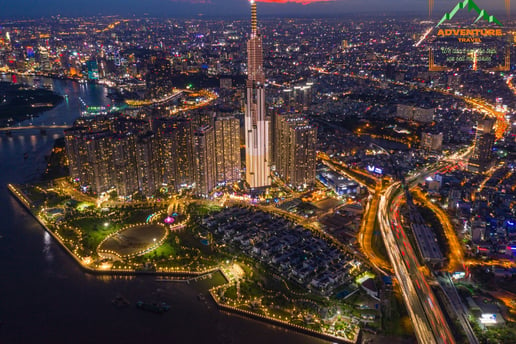

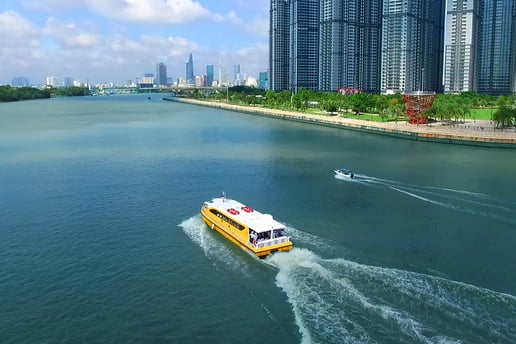

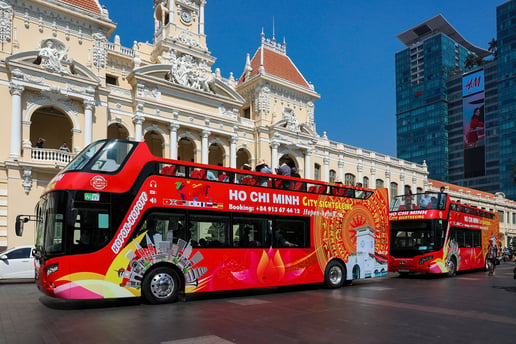

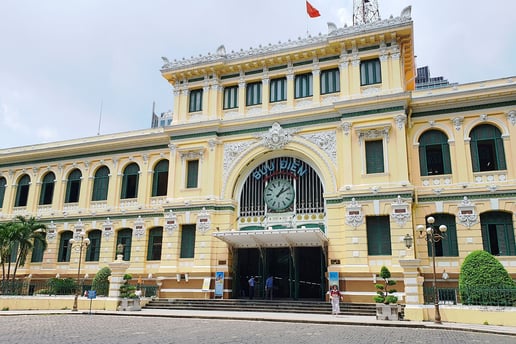

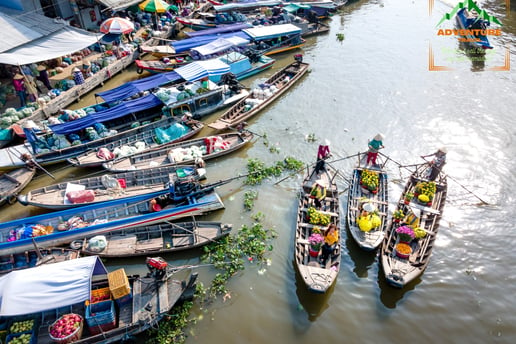

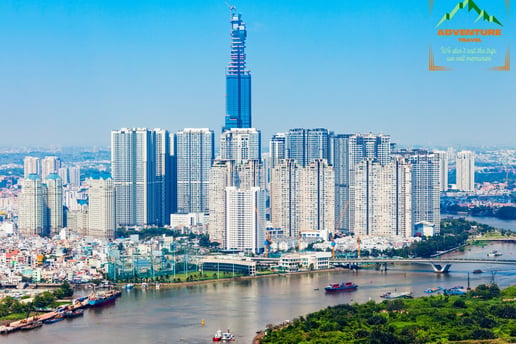

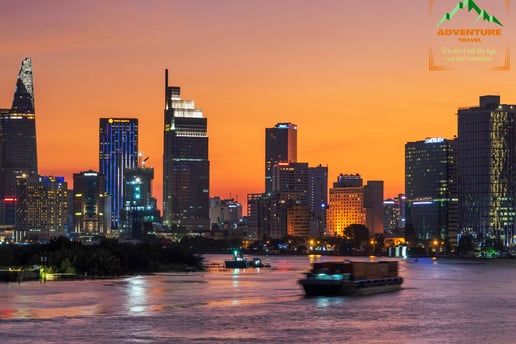

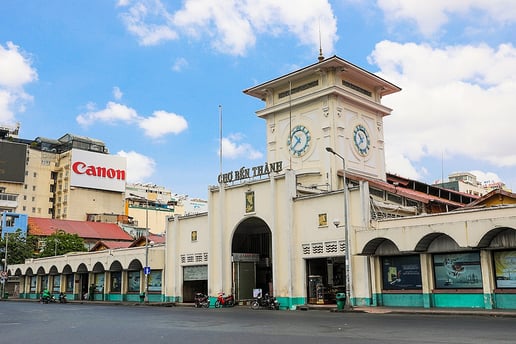

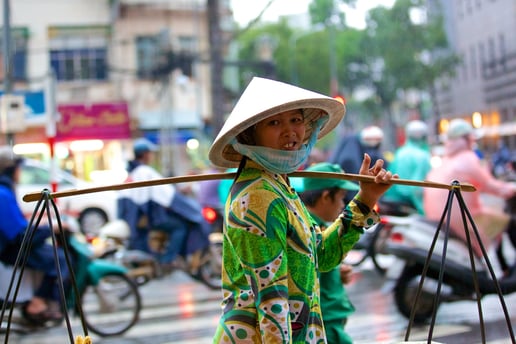


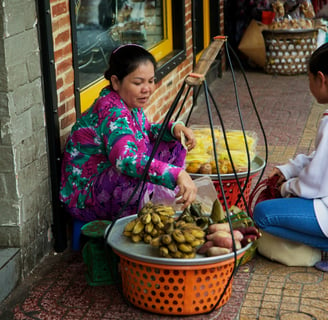
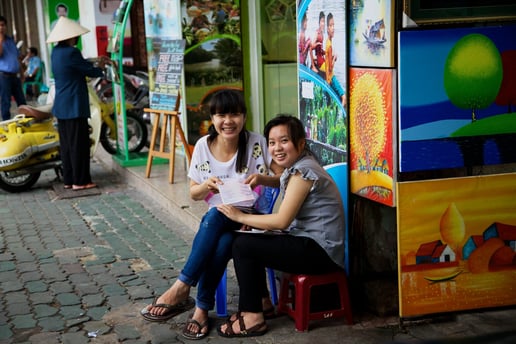

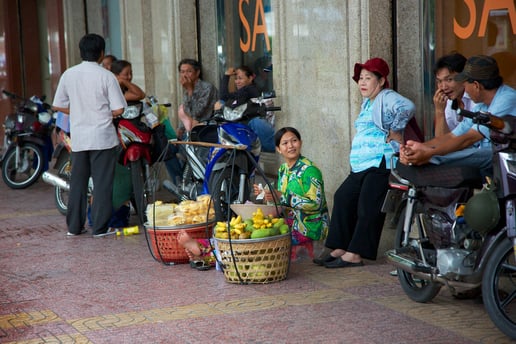

Connect with us
Experience authentic Vietnam with personalized travel journeys.
Contact us
Sign up for the best offer
Email: info@addytravel.com
Hotline: +84-983 585 189
© 2024. All rights reserved by Addy Travel
